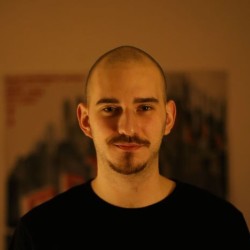
Dr Davide Berghi
Publications
Leveraging machine learning techniques, in the context of object-based media production, could enable provision of personalized media experiences to diverse audiences. To fine-tune and evaluate techniques for personalization applications, as well as more broadly, datasets which bridge the gap between research and production are needed. We introduce and publicly release such a dataset, themed around a UK weather forecast and shot against a blue-screen background, of three professional actors/presenters – one male and one female (English) and one female (British Sign Language). Scenes include both production and research-oriented examples, with a range of dialogue, motions, and actions. Capture techniques consisted of a synchronized 4K resolution 16-camera array, production-typical microphones plus professional audio mix, a 16-channel microphone array with collocated Grasshopper3 camera, and a photogrammetry array. We demonstrate applications relevant to virtual production and creation of personalized media including neural radiance fields, shadow casting, action/event detection, speaker source tracking and video captioning.
Immersive audio-visual perception relies on the spatial integration of both auditory and visual information which are heterogeneous sensing modalities with different fields of reception and spatial resolution. This study investigates the perceived coherence of audio-visual object events presented either centrally or peripherally with horizontally aligned/misaligned sound. Various object events were selected to represent three acoustic feature classes. Subjective test results in a simulated virtual environment from 18 participants indicate a wider capture region in the periphery, with an outward bias favoring more lateral sounds. Centered stimulus results support previous findings for simpler scenes.
Object-based audio production requires the positional metadata to be defined for each point-source object, including the key elements in the foreground of the sound scene. In many media production use cases, both cameras and microphones are employed to make recordings, and the human voice is often a key element. In this research, we detect and locate the active speaker in the video, facilitating the automatic extraction of the positional metadata of the talker relative to the camera’s reference frame. With the integration of the visual modality, this study expands upon our previous investigation focused solely on audio-based active speaker detection and localization. Our experiments compare conventional audio-visual approaches for active speaker detection that leverage monaural audio, our previous audio-only method that leverages multichannel recordings from a microphone array, and a novel audio-visual approach integrating vision and multichannel audio. We found the role of the two modalities to complement each other. Multichannel audio, overcoming the problem of visual occlusions, provides a double-digit reduction in detection error compared to audio-visual methods with single-channel audio. The combination of multichannel audio and vision further enhances spatial accuracy, leading to a four-percentage point increase in F1 score on the Tragic Talkers dataset. Future investigations will assess the robustness of the model in noisy and highly reverberant environments, as well as tackle the problem of off-screen speakers.
Sound Event Localization and Detection (SELD) is a task that involves detecting different types of sound events along with their temporal and spatial information, specifically, detecting the classes of events and estimating their corresponding direction of arrivals at each frame. In practice, real-world sound scenes might be complex as they may contain multiple overlapping events. For instance, in DCASE challenges task 3, each clip may involve simultaneous occurrences of up to five events. To handle multiple overlapping sound events, current methods prefer multiple output branches to estimate each event, which increases the size of the models. Therefore, current methods are often difficult to be deployed on the edge of sensor networks. In this paper, we propose a method called Probabilistic Localization and Detection of Independent Sound Events with Transformers (PLDISET), which estimates numerous events by using one output branch. The method has three stages. First, we introduce the track generation module to obtain various tracks from extracted features. Then, these tracks are fed into two transformers for sound event detection (SED) and localization, respectively. Finally, one output system, including a linear Gaussian system and regression network, is used to estimate each track. We give the evaluation resn results of our model on DCASE 2023 Task 3 development dataset.